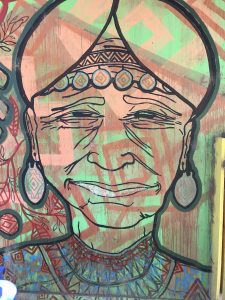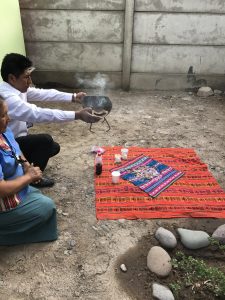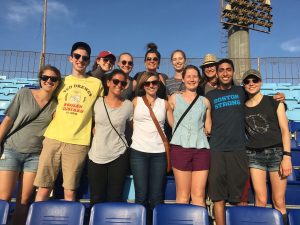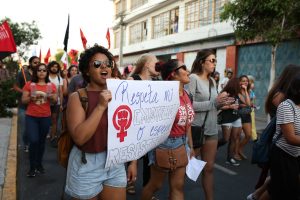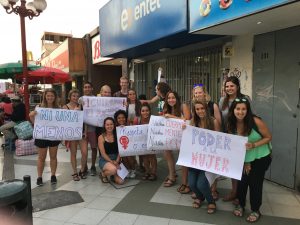This week we were able to visit two different public health centers in Arica and the nearby valley of Azapa. The first location that we visited was a primary care health center that focuses on family medicine. It’s one of several in Arica and throughout Chile and they are called CESFAM (centro de salud familiar). Each CESFAM serves a different sector of Arica or the surrounding area. The CESFAM that we visited was a very small building in more residential area of Arica. We were told that the building was constructed with the intent of the clinic serving 20,000 habitants in it’s region. However, that this point the region has grown to a population of 44,000 people who are all required to use this center if they have public insurance. Essentially all of the people in the region don’t have the income level to pay for private insurance so that means almost all of them are using the health center. This means long wait times to see doctors or to make appointments. Despite the apparent lack of space, many of the professionals that gave us presentations during our time their claimed that the wait times were 15 minutes, although one did mention that was an ideal number but did not give us a better estimate for what the wait time actually looks like. I feel this has been a trend at all the health centers we have visited. On paper the Chilean healthcare systems seems amazing with free healthcare at the primary level and very inexpensive care at the hospital (where only those with a higher income are required to pay anything at all) however many people who have the available income to pay for private insurance (ISAPRE) are doing so. Why? What does the private sector have to offer that the public sector doesn’t? For the most part people have been saying that it’s faster to see doctors on the private system. It seems like when we go to see the public health system in practice they are telling us more about what the system looks like on paper and not mentioning the shortcomings that they are seeing in practice so it is hard for me to really know.
The other health center we went to is called a Posta Rural. It is a smaller scale primary care clinic in the more rural and agricultural valley of Azapa. The building was very small but there is a full medical team they said. The main difference that I noticed with the Posta Rural is the intercultural aspect of the clinic. Every other CESFAM we went to mentioned that they are an integrated and intercultural facility that uses both traditional and occidental medicine. They mentioned practices like massage and Aymara births. However, all women who give birth do so in the hospital and it is at the hospital that there is a Usuyiri (Aymara midwife) and a room designed to replicate a traditional Aymara home birth as well as a traditional occidental delivery room. The other clinics do not have Usuyiris and none of them mentioned having other Aymara medicinal specialists available. To me, this doesn’t feel intercultural. When I walked into the buildings they very much felt like an occidental medical clinic with little to no hints that other types of medicine might be practiced there. The Posta Rural was very different. When we first arrived we were lead to the back of the building where there is a garden full of herbs used for medicinal purposes in Aymara medicine. They also allowed us to watch an Aymara ceremony called a Phawa. There were two blankets laid out, one diagonally on top of the other with coca leaves and small pink and white candies that we were told were sweets for the Earth. The ceremony always much be completed by one man and one woman. During the ceremony they started a fire in a small grill-like container and poured two bags of incense into the fire before kneeling facing west and speaking to Pacha Mama (Mother Earth). Then they stood up and took two cups, one with red wine and the other with water, and started to walk around the blankets pouring a little liquid at each corner and saying a wish they had. To end the ceremony the returned to kneeling facing the west and poured the rest of the incense into the fire. Inside the clinic, all the names of the rooms were in Spanish and Aymara. I asked if there were many people who identified as Aymara working at the clinic and they told me that there were a fair number. The woman who participated in the Aymara ceremony at the beginning was also a Usuyiri/Quillri (Aymara midwife and healer). This was the first time true intercultural medicine that I had see in Chile thus far. We were told that they make salves and creams out of the plants they grow and they also teach classes about how to do so at home. These options are available to Aymara and non-Aymara people. While this was the first example of intercultural medicine I have seen and not just been told about, the Posta Rural was not perfect. From the moment we walked in with our white lab coats we overwhelmed the space available and took the attention of the medical team away from the patients. I watched as one elderly woman sat waiting from the moment we walked in to after we left and she wasn’t the only one. I felt awful coming into a place where many of the patients waiting need to get to work or get their children to school and taking over the building.
